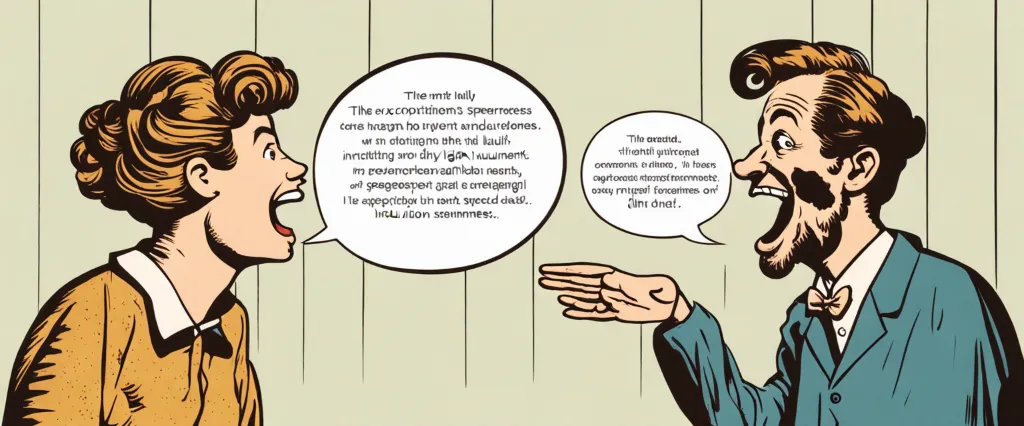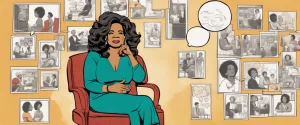
The art of public speaking has evolved significantly over the years, and numerous resources have emerged to guide individuals in harnessing their communication skills for maximum impact. Among these resources, two prominent works stand out as invaluable sources of wisdom and inspiration: “Do You Talk Funny” by David Nihill and “TED Talks” by Chris Anderson. In their respective books, Nihill and Anderson delve into the realms of humor and storytelling, providing readers with powerful insights on how to captivate an audience and deliver compelling presentations.
David Nihill, a renowned comedian, author, and public speaker, takes a lighthearted yet practical approach to the subject of public speaking in his book, Do you talk funny. Combining personal anecdotes with comprehensive research, Nihill explores the essence of humor and delves into its transformative potential. With a friendly and relatable tone, he navigates the intricacies of comedy, offering techniques and tips that empower readers to elevate their speeches into vibrant, engaging performances. Nihill’s emphasis on the importance of both preparation and spontaneity in crafting humorous narratives distinguishes his work, leaving readers inspired and equipped to elicit laughter from any audience.
On the other hand, Chris Anderson, the curator of the world-renowned TED Talks, presents a comprehensive guide to delivering impactful speeches in his book aptly titled “TED Talks.” Drawing from the vast catalogue of diverse and captivating TED Talks, Anderson offers invaluable insights into the power of storytelling and the art of persuasion. With a focus on connecting with attendees on a deeper emotional level, he walks readers through the crucial aspects of presentation design, delivery, and connecting with various audiences. Anderson’s unique perspective as the custodian of TED Talks amplifies the credibility of his guidance, making his book an indispensable resource for anyone aiming to leave a lasting impression through public speaking.
While both “Do You Talk Funny” and “TED Talks” provide readers with invaluable tools for effective public speaking, each book approaches the subject matter from different angles. Nihill’s work highlights the significance of humor and comedy, emphasizing the role it plays in engaging audiences. Conversely, Anderson’s “TED Talks” delves into the various dimensions of storytelling and the power behind meaningful narratives. By embarking on a comparative exploration of these two influential works, we can gain a comprehensive understanding of the multifaceted world of public speaking, enabling us to enhance our own abilities to captivate, inform, and inspire audiences.
Brief Summary of Two Books
Do you talk funny by David Nihill
“Do You Talk Funny? 7 Comedy Habits to Become a Better (and Funnier) Public Speaker” is a book by David Nihill. It is a guidebook that explores the art of public speaking through the lens of stand-up comedy. The author, who was initially terrified of public speaking, shares his personal journey of overcoming this fear and becoming a successful comedian.
Nihill begins by explaining the importance of incorporating humor into public speaking engagements to engage and connect with the audience. He argues that humor can enhance the message, make it memorable, and build a rapport with listeners. The book explores seven essential habits that stand-up comedians utilize to generate laughter, and how these habits can be applied to improve public speaking skills.
The seven comedy habits discussed in the book include observation, embracing failure, self-deprecation, speaking with purpose, storytelling, comedic timing, and adapting to the audience. Nihill breaks down each habit, providing practical tips, exercises, and real-life examples to help the reader develop their comedy skills.
Throughout the book, Nihill emphasizes the importance of practice, preparation, and persistence. He encourages readers to step out of their comfort zone, take risks, and learn from their failures. The author also highlights the significance of empathy and understanding the audience’s perspective to tailor the humor effectively.
“Do You Talk Funny?” is a light-hearted and humorous guide that offers insights into the world of comedy and provides practical advice to become a more engaging and entertaining public speaker. Whether the readers are aspiring comedians or individuals looking to improve their presentation skills, this book offers valuable techniques and strategies to add humor and impact to their speeches and presentations.
TED Talks by Chris Anderson
“TED Talks: The Official TED Guide to Public Speaking” by Chris Anderson is a comprehensive guide that explores the art of public speaking and presentation. Chris Anderson, the curator and head of TED, shares his insights and techniques for delivering compelling and impactful TED-style talks.
In this book, Anderson breaks down the key components and strategies behind successful TED Talks. He delves into the importance of storytelling, authenticity, and connecting with the audience. Anderson emphasizes the significance of sharing ideas worth spreading and provides practical advice on how to craft and deliver a memorable talk.
The book covers various aspects of public speaking, including structuring a talk, refining delivery skills, overcoming stage fright, and utilizing visuals effectively. Anderson also discusses the power of rehearsing and offers tips on handling questions and managing time during a presentation.
Throughout the book, Anderson provides real-life examples and anecdotes from successful TED speakers. He highlights the strengths and techniques of these speakers, enabling readers to gain inspiration and learn from their experiences.
Overall, “TED Talks” is a comprehensive and insightful guide for anyone looking to improve their public speaking skills and deliver impactful presentations. Anderson’s expertise and experience in curating TED Talks make this book a valuable resource for both aspiring speakers and those seeking to communicate their ideas more effectively.
Comparison between Two Books

Similarities in Public Speaking
In the books “Do You Talk Funny” by David Nihill and “TED Talks” by Chris Anderson, both authors address the topic of public speaking and share valuable insights. Here are some similarities in their discussions about public speaking:
1. Importance of storytelling: Both authors emphasize the power of storytelling in public speaking. They highlight how incorporating engaging and relatable narratives helps capture the audience’s attention and make the presentation more memorable.
2. Practice and preparation: Nihill and Anderson stress the significance of practice and preparation in becoming an effective speaker. They offer strategies and techniques to improve speaking skills, such as rehearsing speeches, seeking feedback, and analyzing successful speakers’ performances.
3. Overcoming fear and anxiety: Both books acknowledge the common fear and anxiety associated with speaking in public. Nihill and Anderson provide advice and methods to manage these anxieties, including relaxation techniques, visualization, and reframing the fear as excitement.
4. Authenticity and vulnerability: Nihill and Anderson encourage speakers to be authentic and vulnerable when delivering their talks. They argue that genuine emotions and personal stories create a stronger connection between the speaker and the audience, fostering trust and engagement.
5. Engaging the audience: Both authors stress the importance of actively engaging the audience during a presentation. They provide suggestions for involving the audience through questions, interactive activities, and humor to create a more dynamic and interactive experience.
6. Visual aids and slides: Nihill and Anderson offer guidelines for effectively using visual aids and slides in presentations. They emphasize the need for simplicity, visually appealing designs, and supportive rather than distracting content.
7. Delivering a clear message: Nihill and Anderson emphasize the significance of clarity and simplicity in conveying a cohesive message. They advise speakers to avoid jargon, use straightforward language, and structure their talks in a logical manner to ensure the message is easily understood.
8. Continuous learning and improvement: Both authors promote the idea of ongoing learning and improvement in public speaking. They encourage speakers to seek feedback, learn from successful speakers, and keep refining their skills through practice, experimentation, and exposure to new presentations styles.
While these books may have different approaches and perspectives, they share a common goal of helping individuals become more confident, engaging, and effective public speakers.
Divergences in Public Speaking
Do You Talk Funny? by David Nihill and TED Talks by Chris Anderson are two books that offer insights into public speaking, but they approach the topic from slightly different angles. While both books aim to help individuals improve their public speaking skills, they have divergent focuses, as outlined below.
1. Approach to Humor:
– Do You Talk Funny? focuses primarily on incorporating humor into public speaking. David Nihill delves into the art of telling jokes, the psychology behind humor, and provides techniques to add comedic elements to speeches.
– In contrast, TED Talks, written by Chris Anderson, has a broader scope, emphasizing the importance of storytelling, clear communication, and captivating the audience. While humor is mentioned in TED Talks, it is not the central focus.
2. Structure and Format:
– Do You Talk Funny? is structured as a guidebook, offering step-by-step advice and practical exercises to help readers become funnier speakers. Nihill breaks down humor into its components and provides exercises to practice delivery and timing.
– TED Talks introduces the concept of “Ideas worth spreading” and explains the TED format of short, concise speeches. Anderson explores the elements necessary for a compelling TED Talk, such as a strong idea, speaker presence, proper storytelling techniques, and the use of visuals.
3. Learning from Experience:
– Do You Talk Funny? draws heavily from David Nihill’s personal experiences as a stand-up comedian, blending humor and public speaking anecdotes. Nihill provides his own insights and shares mistakes he made along the way to becoming a better speaker.
– TED Talks, however, focuses more on providing insights from a range of speakers who have delivered successful TED Talks. Chris Anderson analyzes their performances and offers lessons based on their experiences. This gives readers a broader understanding of what makes a good speaker.
4. Target Audience:
– Do You Talk Funny? is geared towards individuals who want to add humor to their presentations and speeches, regardless of the speaking setting. It is particularly useful for those who want to inject humor but may not have experience in stand-up comedy.
– TED Talks is more suitable for individuals interested in delivering talks in a TED-like format or honing their general public speaking skills. It is beneficial for anyone aiming to communicate ideas effectively in a TED Talk format or other similar platforms.
In summary, while both books provide insights into public speaking, Do You Talk Funny? focuses primarily on humor and has a step-by-step guide format, whereas TED Talks offers broader insights on delivering captivating talks with a focus on storytelling and effective communication. The divergence in emphasis allows readers to choose the book that aligns better with their specific public speaking goals.

Conclusion
Both books are worth reading for different reasons. “Do You Talk Funny?” by David Nihill focuses on the art of public speaking and incorporating humor into presentations. It offers practical tips and techniques to engage and entertain an audience, making it a valuable resource for those looking to enhance their communication skills.
On the other hand, “TED Talks” by Chris Anderson delves into the art of delivering impactful presentations. It explores the strategies utilized by TED speakers to captivate and inspire their audience. This book offers insights into the structure, storytelling, and delivery techniques that can make a speech truly memorable.
Ultimately, the choice between the two books depends on your specific interests and needs. If you are primarily interested in incorporating humor into your presentations, “Do You Talk Funny?” may be more suitable. However, if you want a broader understanding of effective public speaking, “TED Talks” provides a comprehensive overview.



